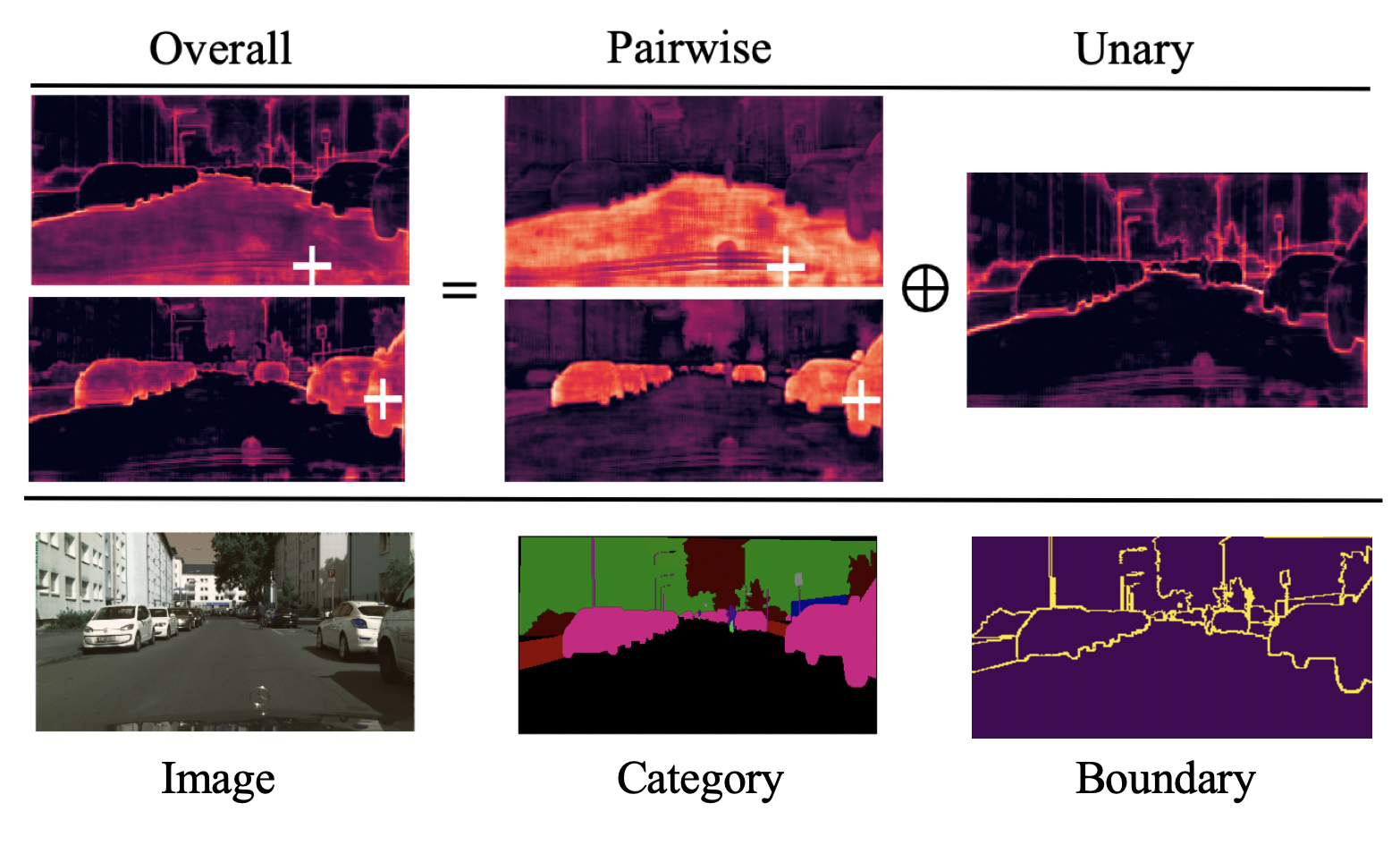Disentangled Non-Local Neural Networks
The non-local block is a popular module for strengthening the context modeling ability of a regular convolutional neural network. This paper first studies the non-local block in depth, where we find that its attention computation can be split into two terms, a whitened pairwise term accounting for the relationship between two pixels and a unary term representing the saliency of every pixel. We also observe that the two terms trained alone tend to model different visual clues, e.g. the whitened pairwise term learns within-region relationships while the unary term learns salient boundaries. However, the two terms are tightly coupled in the non-local block, which hinders the learning of each. Based on these findings, we present the disentangled non-local block, where the two terms are decoupled to facilitate learning for both terms. We demonstrate the effectiveness of the decoupled design on various tasks, such as semantic segmentation on Cityscapes, ADE20K and PASCAL Context, object detection on COCO, and action recognition on Kinetics.
PDF Abstract ECCV 2020 PDF ECCV 2020 AbstractCode
Datasets
Results from the Paper
 Ranked #20 on
Semantic Segmentation
on Cityscapes test
(using extra training data)
Ranked #20 on
Semantic Segmentation
on Cityscapes test
(using extra training data)













 Cityscapes
Cityscapes
 Kinetics
Kinetics
 ADE20K
ADE20K
 PASCAL Context
PASCAL Context
 DensePASS
DensePASS
 DADA-seg
DADA-seg